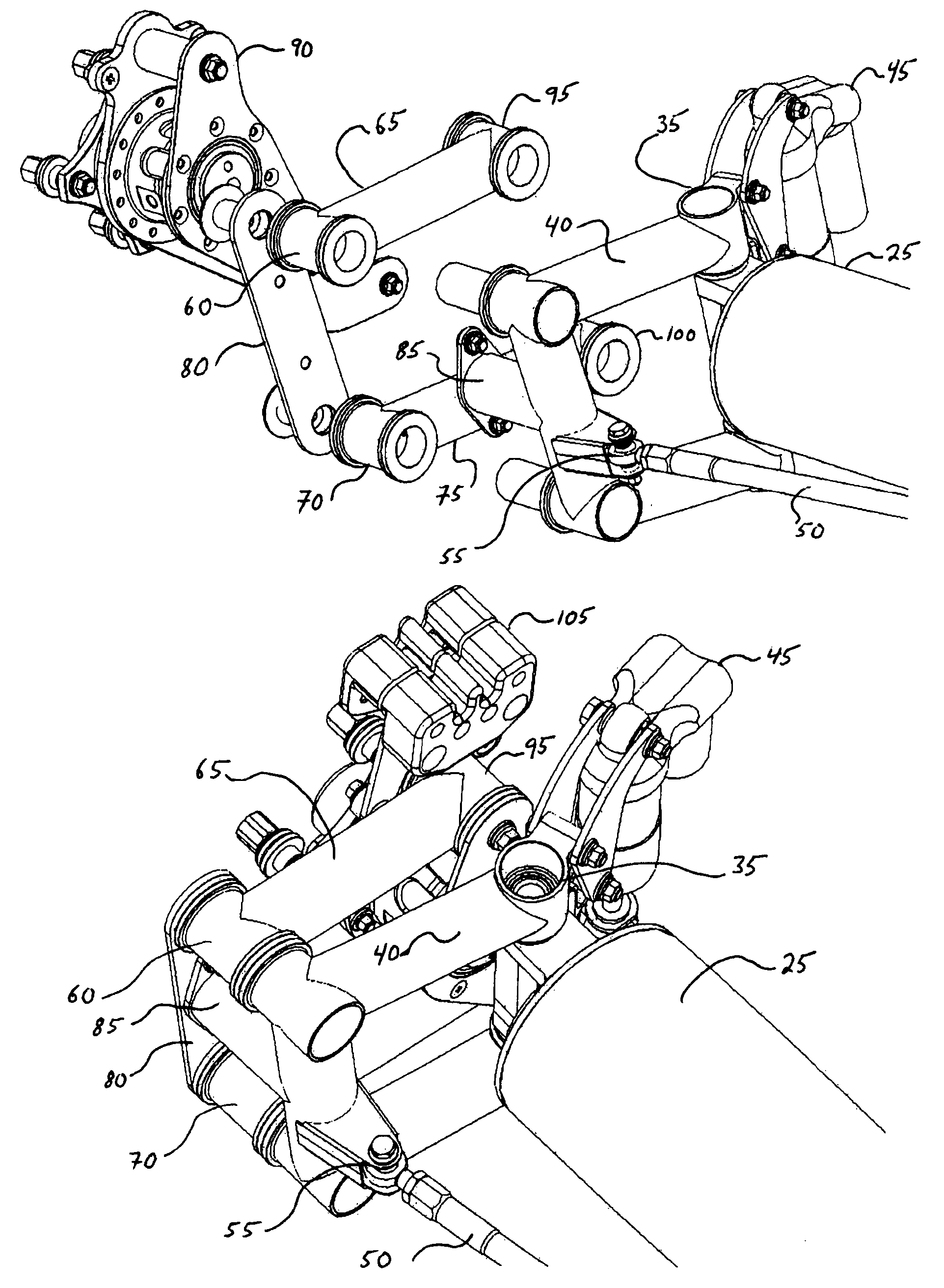Vehicle suspension system
a suspension system and vehicle technology, applied in the direction of rigid suspensions, steering links, transportation and packaging, etc., can solve the problems of affecting the design, utility, economy and safety of the vehicle, affecting the use of ordinary passenger vehicles, and affecting the safety of passengers, so as to reduce the impact on the interior space of the vehicle.
- Summary
- Abstract
- Description
- Claims
- Application Information
AI Technical Summary
Benefits of technology
Problems solved by technology
Method used
Image
Examples
Embodiment Construction
[0035]The system of this invention is applicable to steered and non-steered suspensions and may be used either at a vehicle's front or rear wheels. The following description assumes a front axle, steered suspension.
[0036]FIG. 1 provides a perspective view of the exterior of a vehicle 5 employing the suspension system of this invention. Tires 10 are positioned outboard from the vehicle's main body structure 15. Each tire 10 is mounted on a wheel 20 which is not visible in FIG. 1. In the novel system of this invention all moving suspension components are positioned close to or inside of an actual wheel 20. The moving components are, in turn, attached to the vehicle's main structure 15 with a rigid, relatively inflexible transverse beam 25, the shape of which may be straight or assume another configuration, as desired. Each tire 10 and wheel 20 assembly is surrounded by a cowling 30 of minimized cross section to facilitate air flow and thereby reduce aerodynamic drag.
[0037]FIG. 2 prese...
PUM
| Property | Measurement | Unit |
|---|---|---|
| angle of inclination | aaaaa | aaaaa |
| angle of inclination | aaaaa | aaaaa |
| angle of inclination | aaaaa | aaaaa |
Abstract
Description
Claims
Application Information
 Login to View More
Login to View More - R&D
- Intellectual Property
- Life Sciences
- Materials
- Tech Scout
- Unparalleled Data Quality
- Higher Quality Content
- 60% Fewer Hallucinations
Browse by: Latest US Patents, China's latest patents, Technical Efficacy Thesaurus, Application Domain, Technology Topic, Popular Technical Reports.
© 2025 PatSnap. All rights reserved.Legal|Privacy policy|Modern Slavery Act Transparency Statement|Sitemap|About US| Contact US: help@patsnap.com



